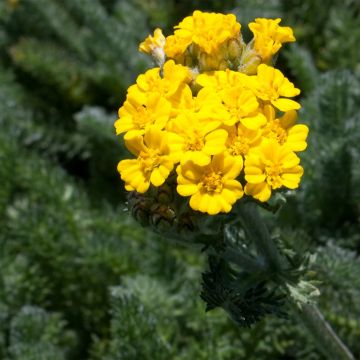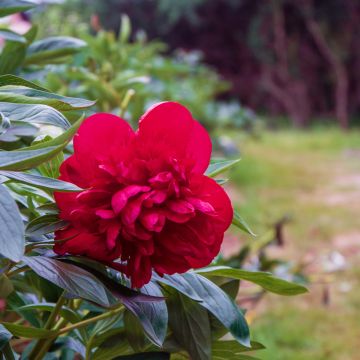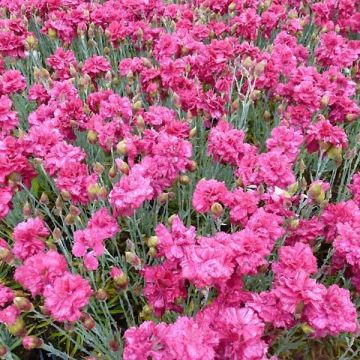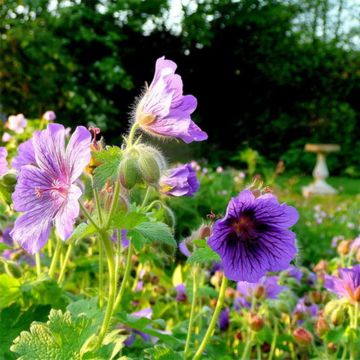

Trillium flexipes


Trillium flexipes


Trillium flexipes
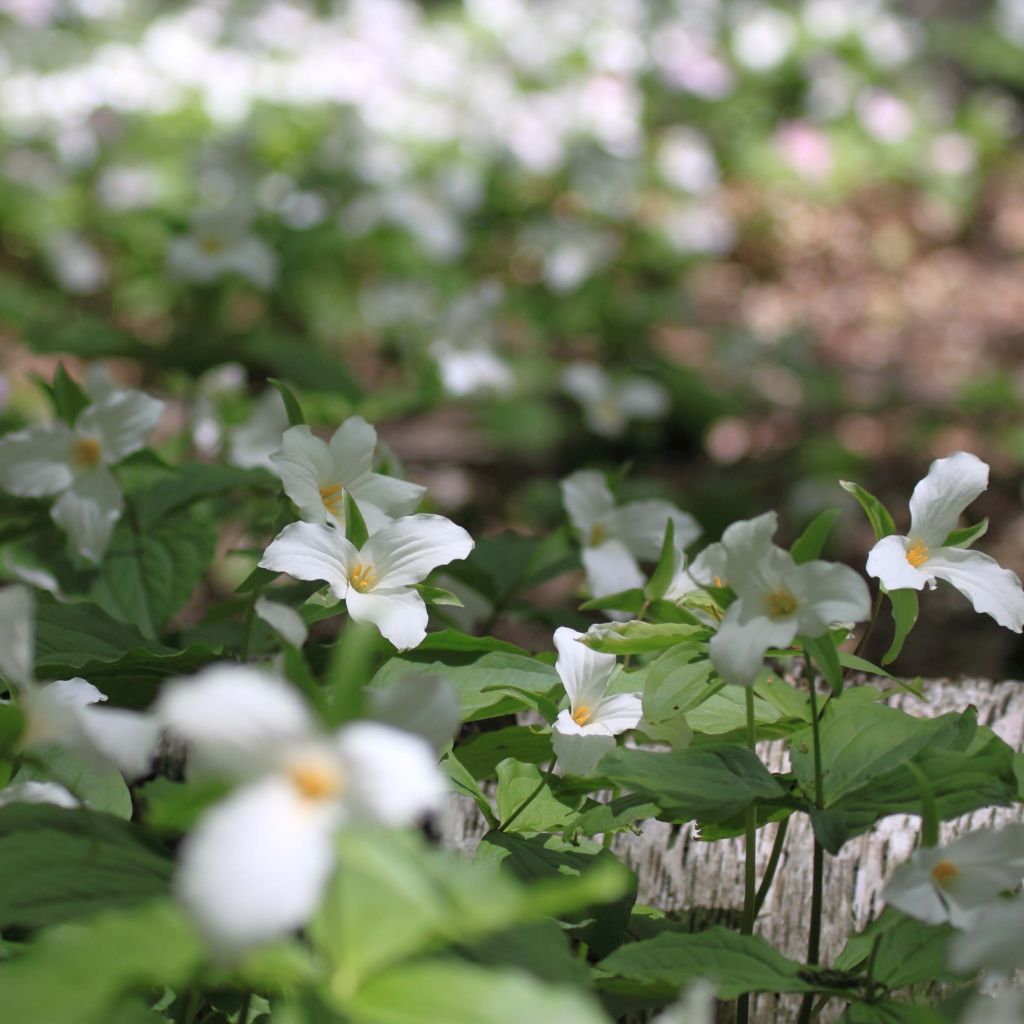

Trillium flexipes
Trillium flexipes
Trillium flexipes
Nodding Wake Robin
This item cannot be shipped to the selected country
Delivery charge from €5.90
More information
Schedule delivery date,
and select date in basket
This plant carries a 12 months recovery warranty
More information
We guarantee the quality of our plants for a full growing cycle, and will replace at our expense any plant that fails to recover under normal climatic and planting conditions.
From €5.90 for pickup delivery and €6.90 for home delivery
Express home delivery from €8.90.
Does this plant fit my garden?
Set up your Plantfit profile →
Description
Trillium flexipes is part of a group of perennial plants with rhizomes native to North America, quite rare in cultivation, highly sought after by collectors of unusual plants. Trillium flexipes, distinguished by its beautiful stature, is also one of the easiest to acclimatise in the garden, in moist soil. The plant blooms in spring, above a trio of lush and beautifully spread flat leaves, a white flower, more or less pendulous. It slowly spreads in partial shade, forming unusual and beautiful clumps in any light and moist soil. It will look stunning planted en masse in a woodland garden or in an exotic-inspired border, in partial shade.
Trillium flexipes, previously classified in the Liliaceae family, now belongs to the Melanthiaceae family. It is a distant North American relative of the fragrant Solomon's Seal that populates European woodlands. It is native to the Midwest of the United States, where it blooms in spring in alluvial forests and on rocky slopes, in undergrowth or along watercourses, on sometimes limestone, loamy or peaty soil.
A herbaceous and perennial plant, Trillium flexipes develops in spring from an underground rhizome that does not like to be disturbed. It becomes dormant as soon as the soil dries out, in the course of summer, or in autumn due to the cold. The plant produces leafy stems in spring, standing at an average of 40 cm (16in) above the ground. Thanks to its rhizomes, this Trillium will slowly form small clumps occupying at least 40 cm (16in) of the ground. Each stem bears only 3 magnificent leaves, arranged horizontally. The leaves are round to lanceolate in shape, beautifully undulate, of a beautiful bright green, traversed by prominent parallel veins. They measure about 15 cm (6in) long and 13 cm (5in) wide.
The flowers appear in April-May, more or less early depending on the climate, most often above the trio of leaves, at the terminal part of the stems. The flower is carried by a long peduncle more or less erect or arching. The flower is 5 to 8 cm (2 to 3in) wide, composed of 3 petals of white colour, more rarely pale yellow. Flowers are pollinated by insects. The flowers give way to 3 cm (1in) berries, angular, with 6 sides, turning red when ripe, exuding a fruity scent. In Trilliums, the seeds are dispersed by ants. Plants grown from seeds can take several years before flowering.
A bit slow to establish, Trillium flexipes nevertheless lives long and requires little care where it thrives. It should be planted in groups of 3 specimens in shade or dappled sunlight (introduce multiple plants in a small area), in rich soil that remains moist for as long as possible. It will blend well with other small perennials that enjoy the same environment, but with different flowering times or interesting foliage: consider, for example, Ophiopogons, Saxifraga, small ferns, Asarum... It can be grown in pots, with careful watering. Whether in the ground or in pots, it always pairs well with Begonia grandis subsp. evansiana which will take over after its flowering.
The Latin name Trillium derives from the fact that the different parts of these plants are ternary: from the unique collection of three leaves on each stem, to the construction of the flower, composed of 3 green sepals, 3 coloured petals, six stamens and 3 fused carpels.
Report an error about the product description
Trillium flexipes in pictures




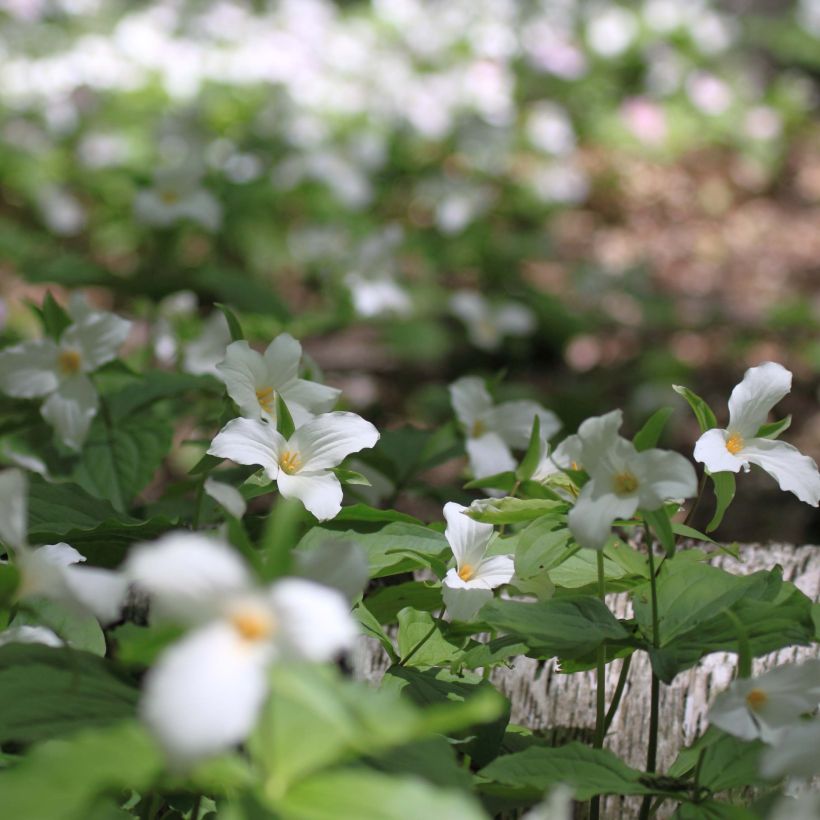

Flowering
Foliage
Plant habit
Botanical data
Trillium
flexipes
Liliaceae (Melanthiaceae)
Nodding Wake Robin
North America
Other Perennials A to Z
Planting and care
Trillium flexipes likes moist but well-drained soils during its growth and flowering period. It tolerates limestone and likes loam and clay soils, but also appreciates humus-rich (understorey) soils, slightly acidic to neutral. Plant it in semi-shade or not too dense shade. Plant it so that its rootstock is located 5 or 7 cm (2 or 3in) below the surface of the soil. Dig a large hole and add leaf soil and well-decomposed compost at planting. Make sure the soil does not dry out too much in summer, otherwise the Trillium may enter dormancy too quickly, which sometimes happens in nature and does not harm the plant's health. Mulch the soil in summer. American Trilliums can withstand cold winters, below -15°C (5°F), even without ground mulching. Divide the clumps in spring, after a minimum of 5 to 6 years of cultivation.
This Trillium takes time to establish itself, it is not uncommon to have to wait 2 years after planting before seeing it bloom for the first time.
Slugs and snails can attack young shoots in spring: make sure to protect them.
Planting period
Intended location
Care
This item has not been reviewed yet - be the first to leave a review about it.
Spring flowering perennials
Haven't found what you were looking for?
Hardiness is the lowest winter temperature a plant can endure without suffering serious damage or even dying. However, hardiness is affected by location (a sheltered area, such as a patio), protection (winter cover) and soil type (hardiness is improved by well-drained soil).

Photo Sharing Terms & Conditions
In order to encourage gardeners to interact and share their experiences, Promesse de fleurs offers various media enabling content to be uploaded onto its Site - in particular via the ‘Photo sharing’ module.
The User agrees to refrain from:
- Posting any content that is illegal, prejudicial, insulting, racist, inciteful to hatred, revisionist, contrary to public decency, that infringes on privacy or on the privacy rights of third parties, in particular the publicity rights of persons and goods, intellectual property rights, or the right to privacy.
- Submitting content on behalf of a third party;
- Impersonate the identity of a third party and/or publish any personal information about a third party;
In general, the User undertakes to refrain from any unethical behaviour.
All Content (in particular text, comments, files, images, photos, videos, creative works, etc.), which may be subject to property or intellectual property rights, image or other private rights, shall remain the property of the User, subject to the limited rights granted by the terms of the licence granted by Promesse de fleurs as stated below. Users are at liberty to publish or not to publish such Content on the Site, notably via the ‘Photo Sharing’ facility, and accept that this Content shall be made public and freely accessible, notably on the Internet.
Users further acknowledge, undertake to have ,and guarantee that they hold all necessary rights and permissions to publish such material on the Site, in particular with regard to the legislation in force pertaining to any privacy, property, intellectual property, image, or contractual rights, or rights of any other nature. By publishing such Content on the Site, Users acknowledge accepting full liability as publishers of the Content within the meaning of the law, and grant Promesse de fleurs, free of charge, an inclusive, worldwide licence for the said Content for the entire duration of its publication, including all reproduction, representation, up/downloading, displaying, performing, transmission, and storage rights.
Users also grant permission for their name to be linked to the Content and accept that this link may not always be made available.
By engaging in posting material, Users consent to their Content becoming automatically accessible on the Internet, in particular on other sites and/or blogs and/or web pages of the Promesse de fleurs site, including in particular social pages and the Promesse de fleurs catalogue.
Users may secure the removal of entrusted content free of charge by issuing a simple request via our contact form.
The flowering period indicated on our website applies to countries and regions located in USDA zone 8 (France, the United Kingdom, Ireland, the Netherlands, etc.)
It will vary according to where you live:
- In zones 9 to 10 (Italy, Spain, Greece, etc.), flowering will occur about 2 to 4 weeks earlier.
- In zones 6 to 7 (Germany, Poland, Slovenia, and lower mountainous regions), flowering will be delayed by 2 to 3 weeks.
- In zone 5 (Central Europe, Scandinavia), blooming will be delayed by 3 to 5 weeks.
In temperate climates, pruning of spring-flowering shrubs (forsythia, spireas, etc.) should be done just after flowering.
Pruning of summer-flowering shrubs (Indian Lilac, Perovskia, etc.) can be done in winter or spring.
In cold regions as well as with frost-sensitive plants, avoid pruning too early when severe frosts may still occur.
The planting period indicated on our website applies to countries and regions located in USDA zone 8 (France, United Kingdom, Ireland, Netherlands).
It will vary according to where you live:
- In Mediterranean zones (Marseille, Madrid, Milan, etc.), autumn and winter are the best planting periods.
- In continental zones (Strasbourg, Munich, Vienna, etc.), delay planting by 2 to 3 weeks in spring and bring it forward by 2 to 4 weeks in autumn.
- In mountainous regions (the Alps, Pyrenees, Carpathians, etc.), it is best to plant in late spring (May-June) or late summer (August-September).
The harvesting period indicated on our website applies to countries and regions in USDA zone 8 (France, England, Ireland, the Netherlands).
In colder areas (Scandinavia, Poland, Austria...) fruit and vegetable harvests are likely to be delayed by 3-4 weeks.
In warmer areas (Italy, Spain, Greece, etc.), harvesting will probably take place earlier, depending on weather conditions.
The sowing periods indicated on our website apply to countries and regions within USDA Zone 8 (France, UK, Ireland, Netherlands).
In colder areas (Scandinavia, Poland, Austria...), delay any outdoor sowing by 3-4 weeks, or sow under glass.
In warmer climes (Italy, Spain, Greece, etc.), bring outdoor sowing forward by a few weeks.







































